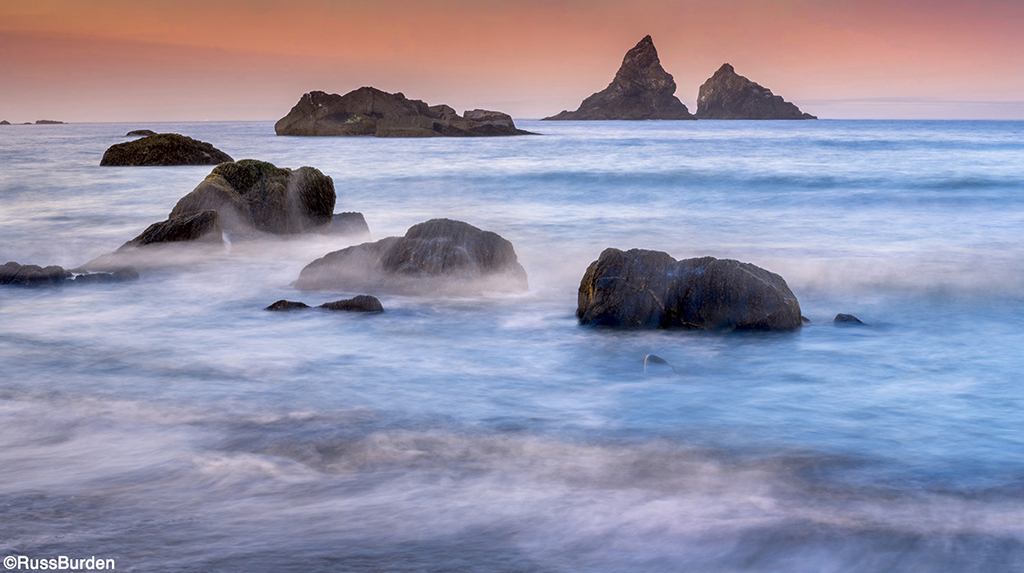
“We learn from our mistakes.” I’ll be forever grateful to the person who penned those words and had them go viral. Those five words contributed to me being the photographer I am today. Those five words pushed me to want to learn what I did wrong as a beginner after looking at all the wasted slide film I shot over a four-week period. I journeyed from my home in the northeast armed with my camera, a few lenses, 30 rolls of film and the all-important polarizer and headed west. The purpose of the trip was to come back with hundreds of great landscapes and show the world my masterpieces. The yellow Kodak boxes slowly arrived and with each glance at the next photo, I eagerly awaited the work of art I expected to see. Long story short—not a single photo revealed a winner.
How could that be? How could I travel to magnificent locations and not replicate the amazing images that motivated me to go to those places in the first place? Little did I know about light. Little did I know about composition. Little did I know about technique. Thirty boxes of 36 slides and not one good one. That’s 1080 mistakes. Not being one who likes to make a lot of mistakes, it was time to learn what constitutes a good photo. If you’re one who doesn’t like to make mistakes, I hope to save you from the hardship I endured. In this two-part Tip of the Week on various aspects of landscape photography, I share with you some key elements to make successful scenics.
Within the following landscape genres I cover, I mention the fundamental and critical aspects of light, simplification, perspective, mergers, backgrounds, leading lines, depth and more. I also share tips, tricks and hints that explain how to add drama and interest to your images. Make a list of these key items and carry them in your camera bag as reminders. I hope the list allows you to go mistake free!
.jwplayer { margin-bottom: 20px; margin-left: auto; margin-right: auto; }
Seascapes
Key aspects of the capture (above): Lone Ranch Beach along the Oregon coast. I added a polarizer for two purposes—it reduced glare on the rocks and water and provided neutral density. This allowed me to make a three-second exposure, which resulted in the mist-like effect of the incoming tide. I also used a 2-stop graduated coral neutral-density filter over the sky to create a darker top portion and add color to the dawn light. Finally, I kept my tripod low to the sand to give the effect I was at the actual water level. I made a number of exposures as the waves came in and/or receded. Each one provided a different look.
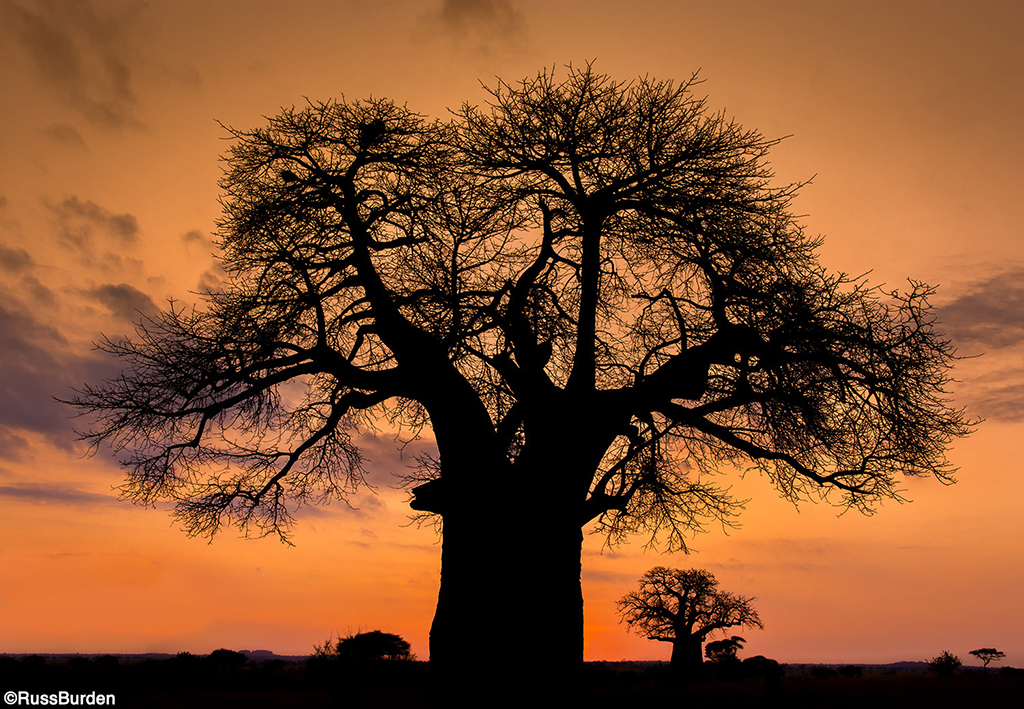
Treescapes
Key aspects of the capture: Tarangire National Park in Tanzania is known for its baobab trees. My favorite time to photograph them is pre-sunrise and post-sunset when there’s color in the sky. I look for the ones that have the iconic baobab shape. I based the exposure totally on the sky. When I took the meter reading, I eliminated the tree and read the light solely on the sky. Had I included the large mass of the silhouetted baobab, the delicate warm tones in the clouds would have been severely overexposed. One other important aspect is I made sure to not merge the branches of the main tree with the secondary one in the background to maintain separation.
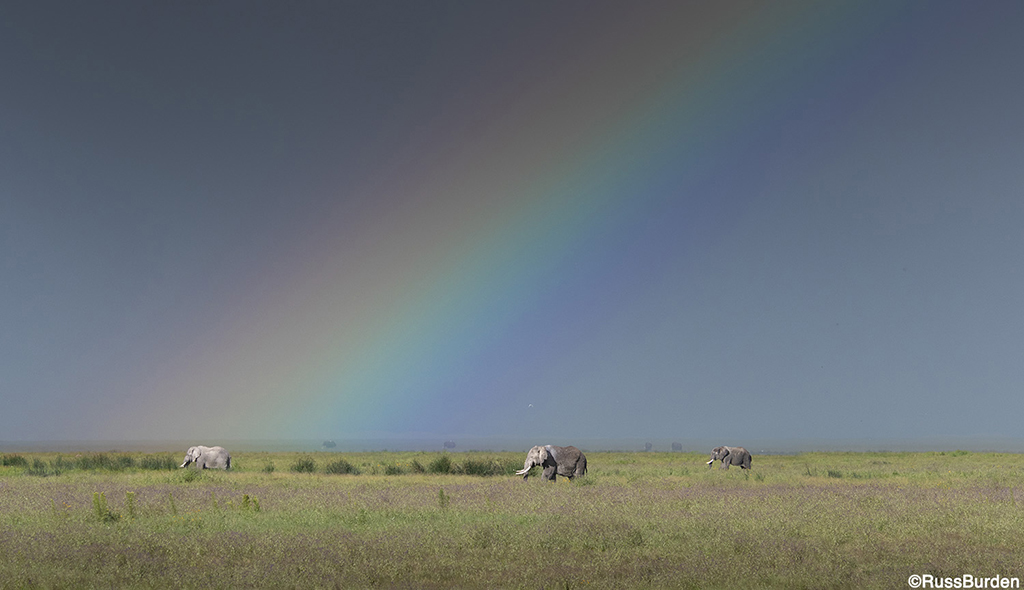
Weatherscapes
Images that depict weather often have high dramatic potential. Clearing or impending storms are key examples. Thunderheads lit by a late sun, tornadoes that spiral in the distance, blizzards that show side-blown snow in gale force winds, and huge storm surges along the coast often leave viewers in awe. A more serene weather element I like to capture is a rainbow. A subject I like to include in a weatherscape is wildlife. Key aspects of the capture: I intentionally made the animals small so the landscape dominated the scene. The elephants let the viewer infer the photo was made on a different continent, but the rainbow dominates as the scenic. I purposely waited until the lead pachyderm walked under the rainbow to be a leading line to the animal.
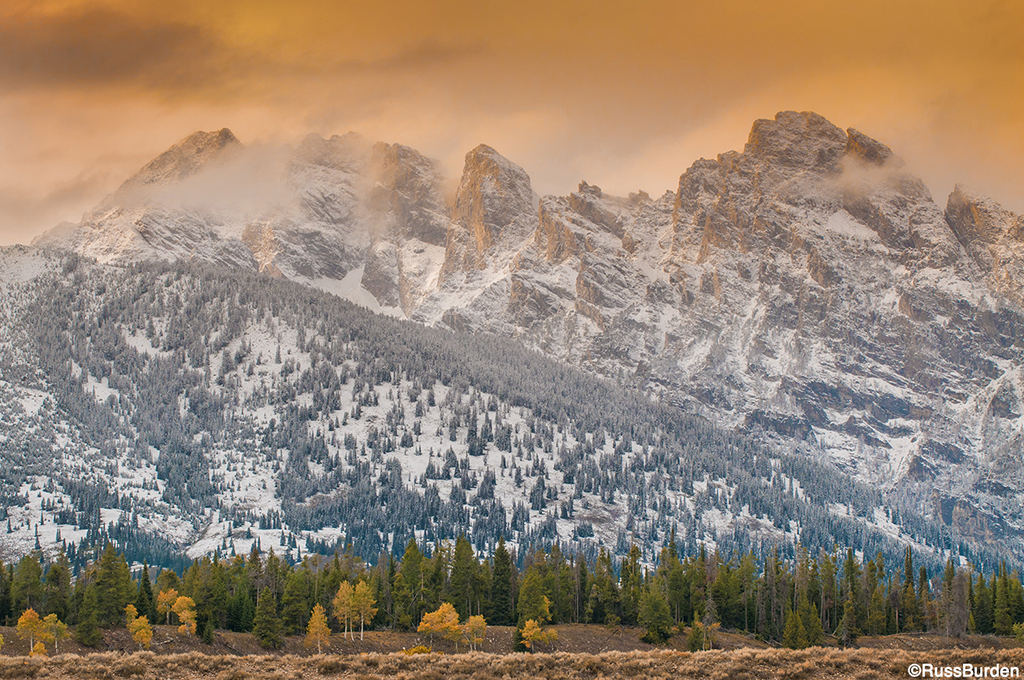
Mountainscapes
Key aspects of the capture: Clearing storm and fall closed aspens. As noted just above, clearing storms that coincide with sunrise and/or sunset bestow the landscape photographer with dramatic light. The image of the fall color in Grand Teton National Park was made just as the sun popped through a small opening in the clouds a few moments after the scheduled time of sunrise. It lasted about 30 seconds, but the emitted light provided warmth, direction, subtle shadows, highlights and a multi-textured sky. I saw the potential, stopped the car, set up my gear and waited. The 10 minutes I invested into getting the capture was well worth it. Could it have not developed? Absolutely! But, I ignored the cold and awful weather and as a result, I was given the gift that appears in this week’s tip.
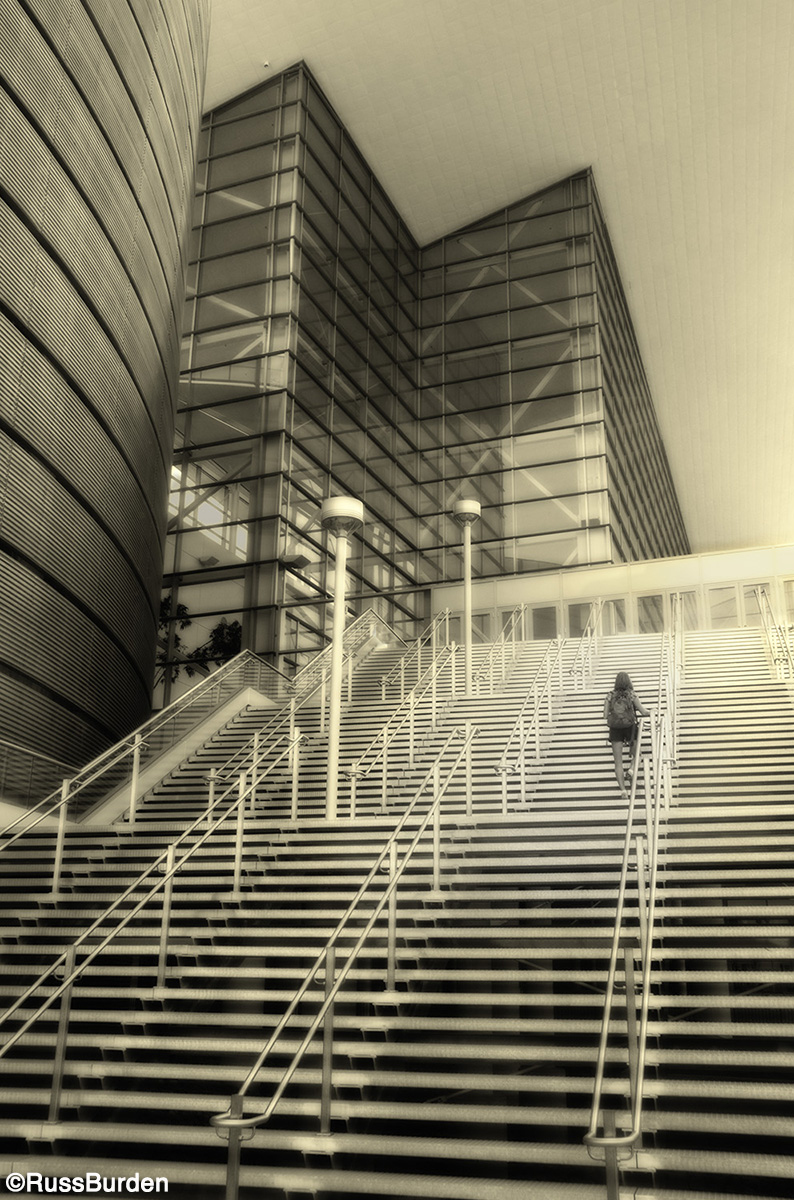
Cityscapes
Key aspects of the capture: Compositions that contain various angles, shapes, forms and textures and are graphic are prime candidates for black-and-white conversion. In walking around downtown, I saw the composition and made a few exposures. Each time I viewed the LCD I felt something was missing. The void on the stairs bothered me until I realized that if I ask a person to slowly walk up and down the right-hand portion of steps, it may add the missing ingredient. I asked a passerby if she would make a trip up the stairs for a photo. As soon as I looked on the back of the camera, the missing piece fell into place. I used a wide angle with a small aperture to cover the depth of field. As a result, the shutter was slow, so I asked her to leisurely ascend to ensure she would be sharp.
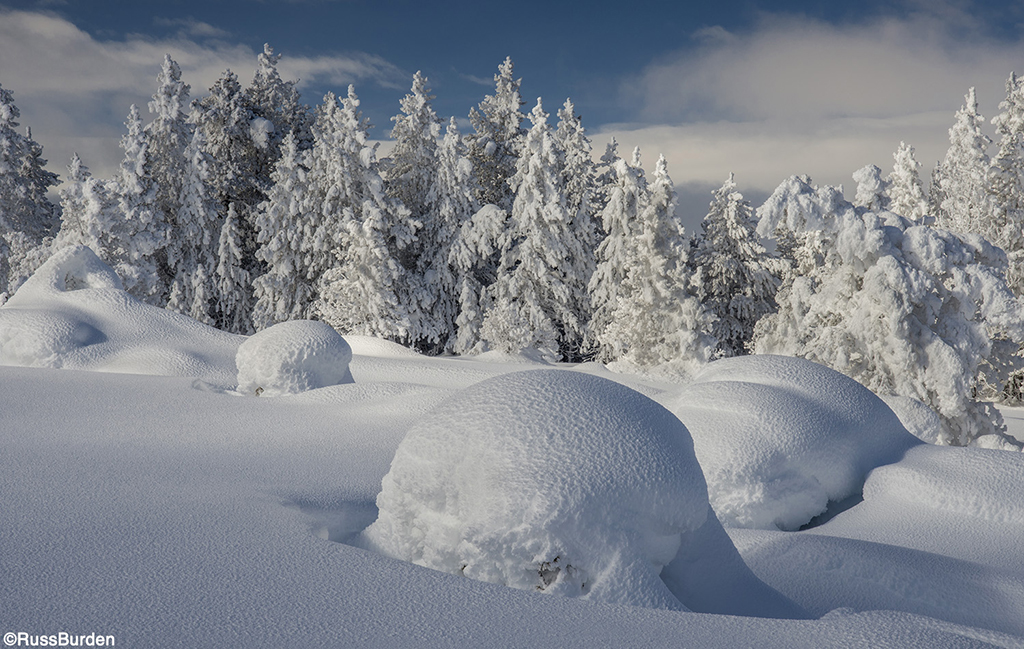
Snowscapes
Key aspects of the capture: I wanted to create depth in an otherwise flat scene of all white fresh snow. To accomplish this, I first waited for a bit of soft light to break through to depict some soft shadows and highlights. I knew I could show depth by showing the viewer three distinct layers: foreground rock, sugar-dipped evergreens and white clouds with a patch of blue. I attached a wide lens and walked close to the primary foreground rock being careful to not disturb any virgin snow. I positioned the main rock in the rule of thirds and waited for the light to skim across the middle section of trees. Most of the time they were in very flat light, which provided little interest. Patience, thought and previsualization are key—the more you incorporate these strategies into your photography, the better.
To learn more about this subject, join me on a photo safari to Tanzania. Visit www.russburdenphotography.com to get more information.